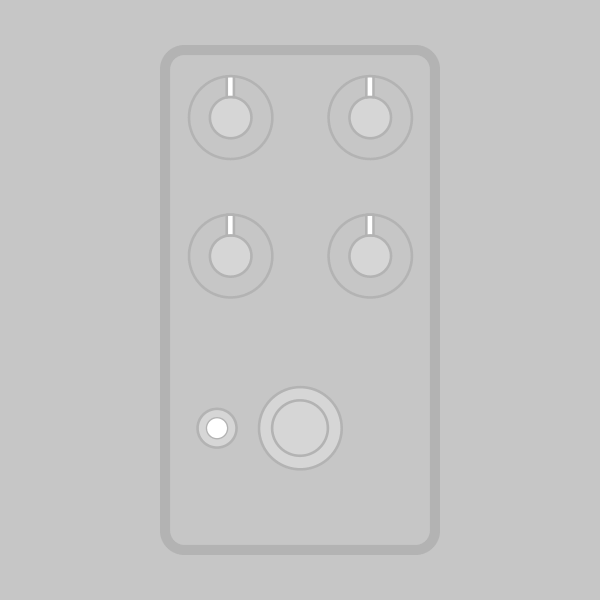
The Sentinel Metal Distortion is based on the Ibanez SM-9 Super Metal, a short-lived entry to the “9” series that was first released in 1983 and discontinued in 1984.
The SM-9 is a very early example (perhaps the first) of a modern amp-like topology in a pedal: multi-stage clipping with tone-shaping before and after. Many solid-state preamps such as the Ampeg VH-140 and Diezel VH-4 employ similar concepts, as well as the Friedman Dirty Shirley and the lead channel of the BOSS® SD-2 Dual Overdrive.
The Super Metal circuit was re-released three more times throughout the 1980s as the MS-10 Metal Charger, SM-L Super Metal, and SM-01 Super Metal, the latter of which was only in Japan under the Maxon brand name. All four of these are the same pedal internally. (The “reissue” Maxon SM-9 Pro+ from 2010 has not been traced, but just based on the exterior of the pedal, it’s clear it has some major differences and is not an exact clone.)
The Sentinel is an exact clone of the SM-9, with two differences. First, the “Edge” control is normally a single knob that controls two gyrators at ~1.2kHz and ~2.3kHz. This is similar to the BOSS® HM-2, but unlike the HM-2 these two frequency bands don’t have much overlap—so we split them out into two knobs allowing both bands to be controlled independently. If they’re set in identical positions, it’ll be the same as the original SM-9, but this way you can fine-tune the high EQ a little more easily and get some expanded tones not found in the stock circuit. You can also lower the frequency of one of the bands if you want to experiment with creating a true midrange control (more information in the build document).
The second difference is the addition of a charge pump for 18V operation. This increased voltage is switchable, so you can also run it at the stock 9V if you want, and even hard-wire it if you don’t care about the 18V option.